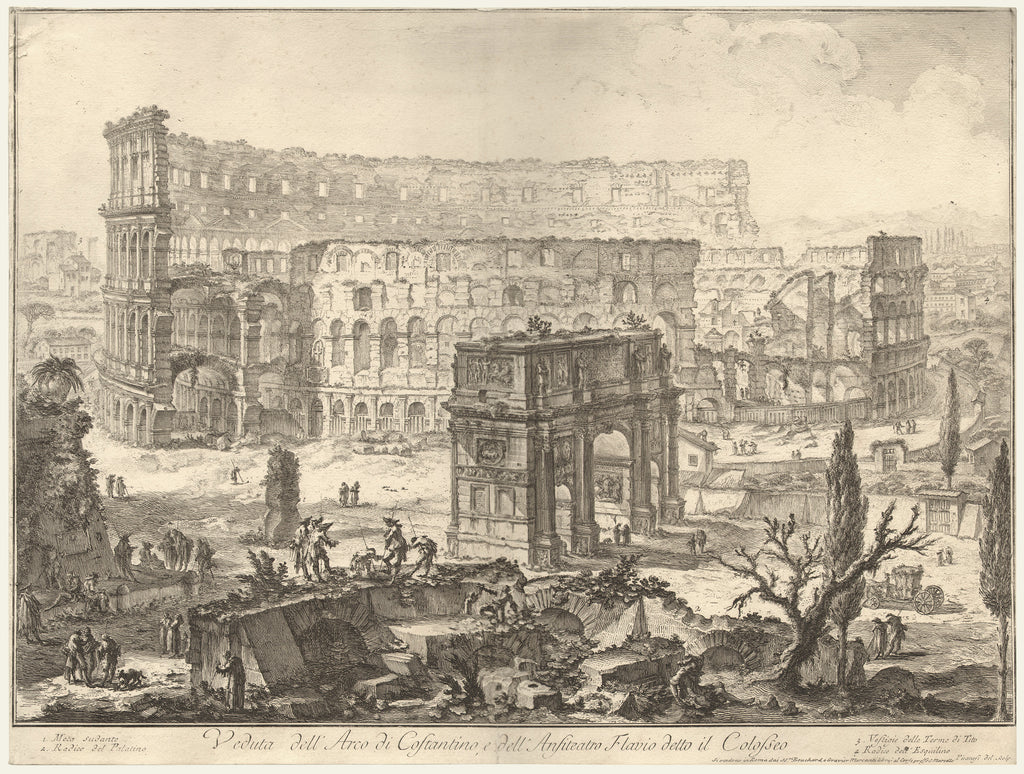- Title: Veduta dell' Arco di Costantino, e dell' Anfiteatro Flavio detto il Colosseo
- Author: Giovanni Battista Piranesi
- Date: 1760
- Medium: Copperplate engraving
- Condition: Very Good - age toning, foxing, margins trimmed
- Inches: 21 1/2 x 15 5/8 [Paper]
- Centimeters: 54.61 x 39.69 [Paper]
- Product ID: 003965
-
View of the Arch of Constantine and of the Flavian Amphitheater called the Colosseum
Exceptionally Rare Early State (Hind 56 – II)
Etching by Giovanni Battista Piranesi. This masterful work presents a bird's-eye view of two iconic Roman landmarks: the Arch of Constantine in the foreground and the Colosseum (also known as the Flavian Amphitheater) in the background. The etching showcases Piranesi's exceptional skill in architectural rendering and perspective. It offers a detailed and romanticized representation of these ancient monuments, combining architectural accuracy with storytelling elements
In the foreground, the Arch of Constantine, the largest of the ancient Roman triumphal arches, is depicted in detail. This arch, built in 315 AD, commemorates Constantine I's victory over Emperor Maxentius. Behind it, the Colosseum looms large, its intricate structure revealed by the aerial perspective.
In addition to becoming one of the most prolific printmakers of the eighteenth century, Giovanni Battista Piranesi (1720-1778) found success as an architect, art theorist, and writer. Born in Venice as the son of a master stonemason, Piranesi demonstrated an affinity for architectural design from a young age, an interest that would persist throughout his career as an engraver. Best known for his etching series titled Vedute di Roma (Views of Rome), Piranesi spent most of his career in Rome, returning to Venice periodically. While his affinity for Roman architecture remained undiminished throughout his life, Piranesi created many designs with Greek, Egyptian, Etruscan, and even Rococo influences, encouraging architects and artists to draw their inspiration from diverse sources.
Piranesi played a major role in shaping European and even global conceptions of Rome and its ancient roots. The 2,000 plates he produced in his lifetime created a vivid architectural landscape which promoted Rome as a paragon of classical art and architecture, documenting forms and aesthetics which would prove hugely influential to both Neoclassicism and Romanticism. Additionally, new disciplines such as classical archaeology gained popularity as an increasing number of people wished to learn the history behind Piranesi’s etchings. It is said that Piranesi’s works had so captivated Goethe that upon his first visit to Rome, the German was left slightly underwhelmed, the reality of the ancient city paling in comparison to the grandeur of the images he had studied.


